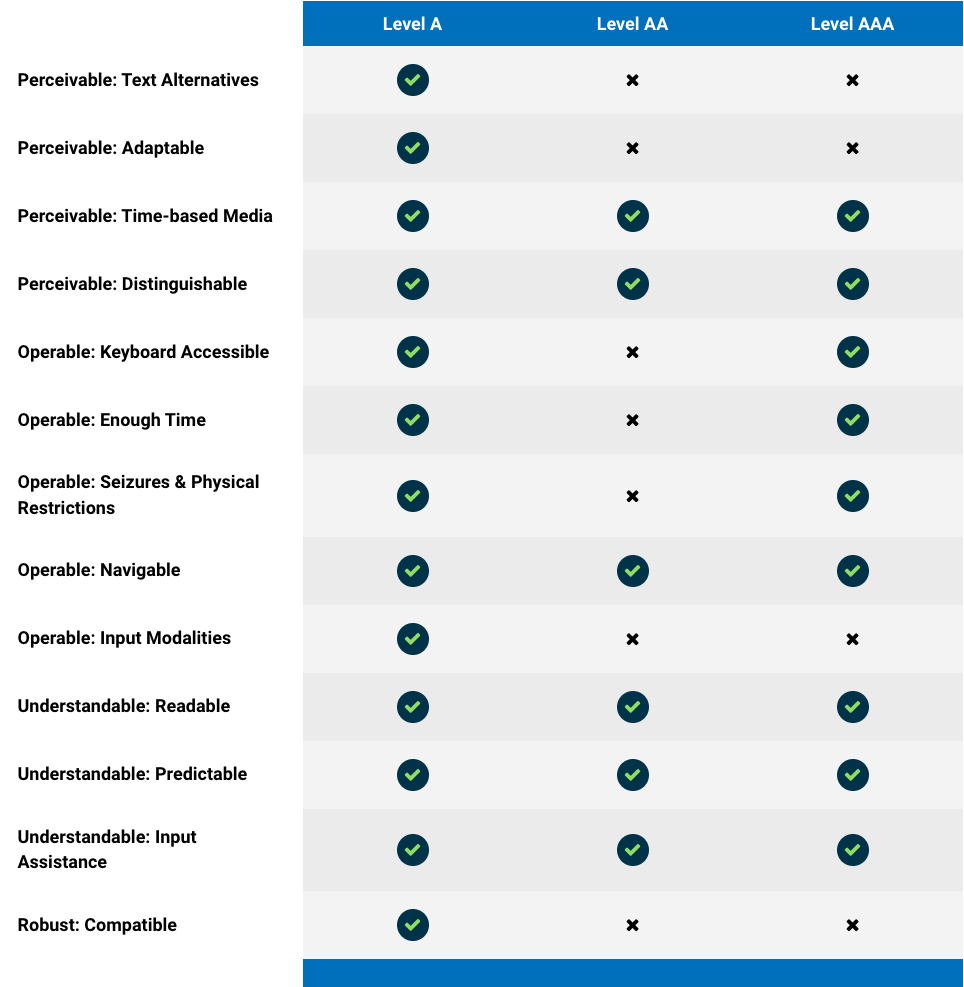playwright-a11y-demo
1.3. Web Accessibility Initiative (WAI)
To understand web accessibility compliance, we need to learn about the current standards, guidelines, and tooling for acessibility compliance!
1.3.1 Web Accesibility Standards
Web Accessibility is governed by the W3C Web Accessibility Initiative (WAI) which defines a core specification (ARIA) and publishes three guidelines (ATAG, WCAG, UAAG) to assist enforcement.
- WAI-ARIA 👉🏽 Accessible Rich Internet Applications specification.
- ATAG 👉🏽 Authoring Tool Accessibility Guidelines for content creation software
- WCAG 👉🏽 Web Content Accessibility Guidelines for content itself
- UAAG 👉🏽 User Agent Accessibility Guidelines - for content access software
We focus primarily on WCAG since websites are about the content.
1.3.1 Web Content Accessibility Guidelines (WCAG)
WCAG consists of WCAG 2.0, WCAG 2.1 and WCAG 2.2 - each version iteratively adds to the previous set of guidelines. To manage the constant evolution of technologies and a11y needs, WCAG uses a layers of guidance approach - going from broad principles to fine techniques.
4Core Principles- Perceivable,
- Operable,
- Understandable,
- Robust (POUR)
- which map to: 👇🏽
13non-testable Guidelines (see figure)- these are not directly testable
- so they in turn map to 👇🏽
58testable Success Criteria- these are testable
- with 3 conformance levels (A=lowest, AA, AAA=highest)
- where criteria are associated with: 👇🏽
- Sufficent & Advisory Techniques
- these define options for evaluating criteria
- Sufficient techniques = enough to meet criteria
- Advisory techniques = extras to go beyond ‘sufficient’

This figure from Deque Systems illustrates the relationship between the 4 principles, the 13 guidelines and the 3 conformance levels.
_Now that we understand the standards and guidelines that define accessibility compliance, we need tools that can help us evaluate it.